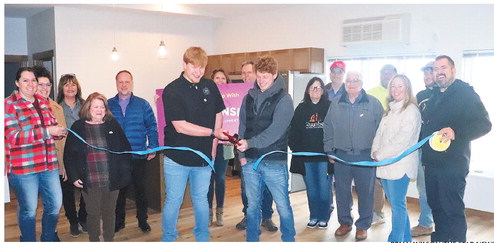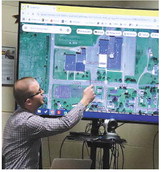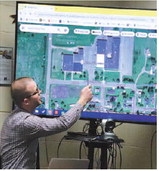Marathon County childcare providers warn of funding ‘cliff’
With federal childcare subsidies ending in 2024 and local parents facing major tuition hikes, Marathon County officials are under increasing pressure to come up with solutions to a daycare shortage plaguing families and businesses.
The Extension, Education and Economic Development (EEED) Committee heard from a group of guest speakers last Thursday about a fastapproaching “cliff” in the childcare industry when Wisconsin stops offering Child Care Counts funding as of Jan. 1, 2024. The program was started during COVID-19 to provide stabilization aid to childcare providers, but a proposal by Gov. Tony Evers to make it permanent was rejected by Republican lawmakers during the recently completed state budget process.
Kelly Borchardt, executive director of Childcaring, Inc. referral service, said Child Care Counts has distributed over $10.6 million in monthly payments to childcare providers in Marathon County since May 2020, helping them pay employees more without having to raise tuition.
Borchardt said Marathon County families already pay between $125 and $350 per week for childcare, which is three times what the federal government says is “affordable” – no more than 7 percent of total household income. On an annual basis, childcare costs families $13,000 for an infant and nearly $24,000 for two children.
Those costs are expected to increase when Child Care Counts ceases to provide subsidies.
Supervisor Michelle Van Krey said she and her husband currently pay $216 per week ($11,000 a year) for having one child in daycare, but they’ve been told to expect a 20 to 40 percent tuition hike, which will bump their annual cost up to as much as $15,000. With a second child on the way, she said their cost could climb to just over $34,000 per year.
“If you look at the median household income in Marathon County, it’s $63,000,” she said. “So, over half of a median household income is going to childcare if they have two kids.”
Van Krey said these families need to continue working in order “to drive our economy.”
The impact of childcare on the local economy was emphasized in a video shown to the committee, featuring Dave Eckmann, CEO and president of the Greater Wausau Chamber of Commerce, who said local businesses are not able to “sustain and grow” without a fully engaged workforce.
Drawing comparisons to the county’s efforts to expand broadband internet access, Eckmann urged county officials to “lean in” on trying to address the childcare shortage by encouraging public-private partnerships.
“To be able to help our businesses compete – not only in a national economy but a global economy – we have to do everything we can to remove barriers to workforce participation,” he said. “Childcare is one of those barriers.”
Another video presented to the committee, produced by the Center for the Study of Child Care Employment at the University of California at Berkeley, advocated for government- funded childcare, similar to how K-12 schools are paid for. It highlighted the difficulties parents have in paying tuition and the struggles of childcare staff to make ends meet with substandard wages.
“Parents can’t afford to pay. Teachers can’t afford to stay,” the video said. “Public investment is the way.”
At least one committee member, supervisor David Baker, objected to the suggestion that county government use tax dollars to cover people’s childcare expenses.
“I think we can say that is not going to happen,” he said.
Baker said he doesn’t want to minimize the importance of the issue, but he believes “simple economics” makes it difficult to pay childcare providers a good wage without “someone other than the parents” covering the cost. Instead of the county picking up the tab, however, he suggested that the public school system take on that responsibility.
Board chairman Kurt Gibbs said the county also needs to address the issue as an employer trying to retain its 700 employees and recruit additional workers when vacancies arise. He noted that vacancy rates are as high as 40 percent among some positions at North Central Health Care Center.
“I think Marathon County has to have a discussion about what its role is, and whether that is subsidizing childcare for its own employees…” he said. “It’s going to have to be a discussion we have, because we cannot continue to deliver services to the citizens of this county without people in positions.”
The county is currently overseeing a grant-funded DreamUp! Group that is investigating alternative business models for childcare operations, possibly by partnering local businesses with care providers. One member of that group, Elsa Duranceau of the North Central Wisconsin Workforce Development Board, encouraged county supervisors to consider ideas developed by her group, some of which involve spending American Rescue Plan Act (ARPA) dollars.
“There is a time clock ticking down right now, and we have to respond with something soon,” she said. In particular, she suggested that county officials speak with those in the business community, many of whom may not realize how the lack of affordable childcare is preventing them from hiring employees.
As part of the county’s recently updated strategic plan, the EEED has until August 31 to develop recommendations for supporting “high-quality affordable childcare” and presenting them to the full board for consideration. Unless the committee schedules a special meeting, that deadline leaves just one more regular meeting, on August 3, for the EEED to vote on recommendations.






